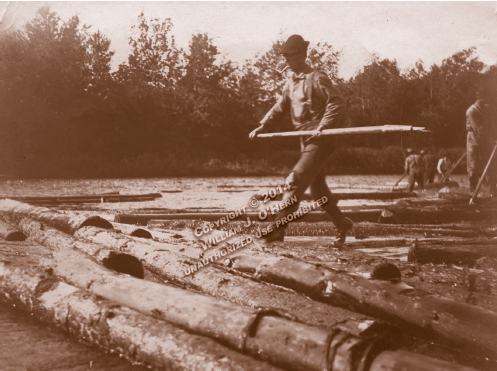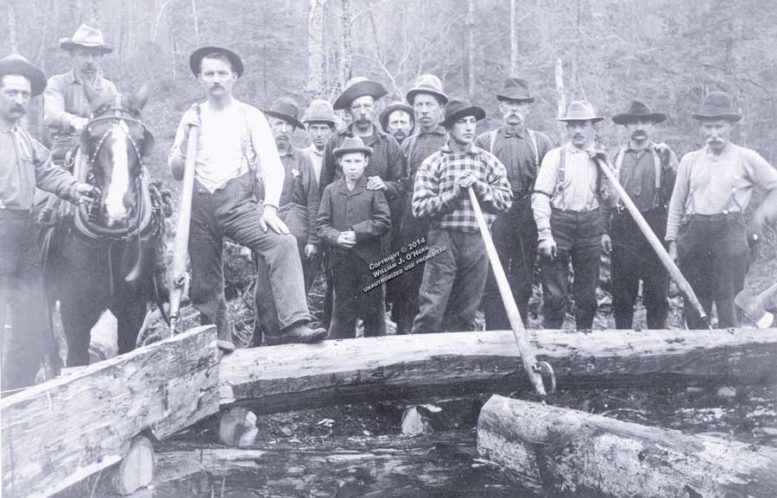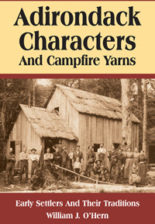The difference is in the extent of the cutting, modern techniques and equipment and the total disappearance of the old-time company-owned lumber camp shanties.

Adirondack Characters And Campfire Yarns
Lumber Camp Shanties
An excerpt from ” Adirondack Characters And Campfire Yarns “, Starting on page 149.

A dam building crew at Mill Creek Lake outlet, 1900. Tom Grimes (far right) and “Mr. Young” (on horseback) are the only two identified.
COURTESY EDWARD BLANKMAN (THE LLOYD BLANKMAN COLLECTION)
The days of the log drive in the Adirondacks are over. Lumbering, of course, is still going on. The difference is in the extent of the cutting, modern techniques and equipment and the total disappearance of the old-time company-owned lumber camp shanties.
The mountains are still the same today as when the old-time lumberjacks left the woods. The land supports rich robes of spruce and hemlock, patterned with stands of hardwoods. On mountain and hill is the same breathless beauty that must have thrilled the lumber companies’ never-ending appetite for wood.
My interest in the Adirondack logging culture stems from my own work in the Crockett’s sawmill early in my adult life. There I learned hard work – enjoyable but demanding. Talking to old-timers started me down a path of personal research. Seeing my interest, one veteran of the lumber woods after another steered me to friends and acquaintances who participated in the latter days of the heyday of the logging era. I gained access to a vast store of yarns, recollections, and photographs of older residents of the region, as well as to more formal state reports and histories.
Someday I’ll develop a book with the material I’ve collected. I want the book to present a man-in-the-street approach to the area’s logging history by de-emphasizing statistical data and concentrating on folklore. The book will contain a background of historical data along with a succession of picturesque incidents, stories and legends of seriousness, humor, and adventure that affected the lives of those who lived in the lumber camps and worked in the Adirondack forest.
I began my informal research just in time, for there were not many old-timers left who could tell what was going on before the days of the Linn tractors when there was still the flavor of the pioneer woodchopper in isolated camps distant from the settlements.
Yes, the lumberjacks and river men, heroes of a romantic saga, whose skill and might provided an income a century ago, are gone today, but for future generations, as well as the present ones, a great amount of material can be gathered to present stories of life in those early days.
The staid facts of logging history are clothed with vivid descriptions of the people who successively lived and worked in the region, and with accounts, often humorous, of events that transpired in early days in Adirondack country.
Those of us who prefer our history informal will be grateful to the old men and women and their relatives for sharing the best of their recollections. Through their memories, the best tradition of historical writing, in my opinion, is a story of the boisterous goings-on of the people who once lived and worked robustly in the lumber woods.
